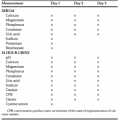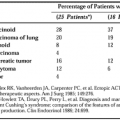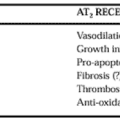STRUCTURE, SYNTHESIS, AND STORAGE OF GONADOTROPINS
SUBUNIT COMPOSITION
The α and β subunit structure of LH and FSH1,2 is similar to that of thyroid-stimulating hormone and human chorionic gonadotropin (hCG; see Chap. 15 and Chap. 112). Within each species, the α subunit is essentially identical in structure among the four hormones, whereas the β subunit differs among the four hormones and determines the biologic function of the dimeric molecule. The two subunits must be bound together through noncovalent interactions to be bioactive; neither has significant activity alone.
CARBOHYDRATE CONTENT
The approximate molecular mass of LH is 28 kDa and of FSH is 33 kDa; the α subunit common to both has a molecular mass of 14 kDa. These weights are approximate because of heterogeneity in the oligosaccharide (carbohydrate) moieties. The common α subunit has two N-linked carbohydrate side chains, LH-β has one, and FSH-β has two. Human chorionic gonadotropin-β has, in addition to two N-linked carbohydrate moieties, four O-linked moieties in its C-terminal 32-amino-acid extension. The exact structure of these carbohydrate side chains is unknown and variable, but they contribute ˜16% of the weight of the LH molecule. The composition of the carbohydrate side chains of a given hormone shows a certain degree of microheterogeneity.3 The composition of these gonadotropin isoforms apparently varies according to the physiologic state and may, thus, determine the intrinsic bioactivity of the circulating gonadotropin at a given moment. However, the physiologic and pathophysiologic significance of this variability still remains unclear.
The sialic acid component of the carbohydrate side chain varies markedly in amount among the gonadotropins: 20 residues per molecule in hCG, 5 in FSH, and 1 or 2 in LH. The sialic acid content is directly related to the half-life of the hormone circulating in blood; hCG is cleared slowly, LH relatively rapidly, and FSH at an intermediate rate. In addition, the high degree of terminal
sulfation of the carbohydrate termini in LH, as well as the rapid elimination of this type of glycoprotein through action of a specific liver receptor, contribute to the faster elimination rate of LH in comparison to FSH.4 Progressive desialylation of the gonadotropins shortens their half-lives and, therefore, decreases their bioactivity in vivo, whereas their in vitro bioactivity may be retained.5,6 Some of the deglycosylated hormones bind to receptors in vitro but do not stimulate adenylate cyclase, thereby functioning as competitive antagonists for the native hormone.7
sulfation of the carbohydrate termini in LH, as well as the rapid elimination of this type of glycoprotein through action of a specific liver receptor, contribute to the faster elimination rate of LH in comparison to FSH.4 Progressive desialylation of the gonadotropins shortens their half-lives and, therefore, decreases their bioactivity in vivo, whereas their in vitro bioactivity may be retained.5,6 Some of the deglycosylated hormones bind to receptors in vitro but do not stimulate adenylate cyclase, thereby functioning as competitive antagonists for the native hormone.7
The α and β subunits are products of separate genes for which the structures have been determined.8,9 A single gene encodes the α subunit for the four glycoprotein hormones. The amino acid sequence contains a leader or signal peptide that is removed before addition of the carbohydrate moieties (see Chap. 3).
An important advance has been the expression in cultured mammalian cells of complementary DNA (cDNA) for the gonadotropins.2 In mammalian cells, processing and glycosylation of the subunits, as well as combination and secretion, occurred in large quantities. In previously used bacterial cell systems, this had not been possible. The hormones produced by this recombinant technology are much purer than those obtained from human pituitaries or urine and can be produced in large quantities with constant quality. Significantly, they lack the postulated capability to transmit Creutzfeldt-Jakob disease, something which has halted the use of hormones prepared from human pituitaries10 (see Chap. 12 and Chap. 18). With this technology, one can also prepare gonadotropin analogs of different conformation and amino-acid or carbohydrate content, and test the structure and function relationships of these molecules, including possible antagonist compounds. Recombinant gonadotropins are now available for human LH, human FSH, and hCG.11 The availability of these agents facilitates greatly the care of patients with gonadotropin deficiencies and aids ovarian priming procedures involved in artificial reproductive techniques such as in vitro fertilization (IVF) and intracytoplasmic sperm injection (ICSI).
Stay updated, free articles. Join our Telegram channel

Full access? Get Clinical Tree






